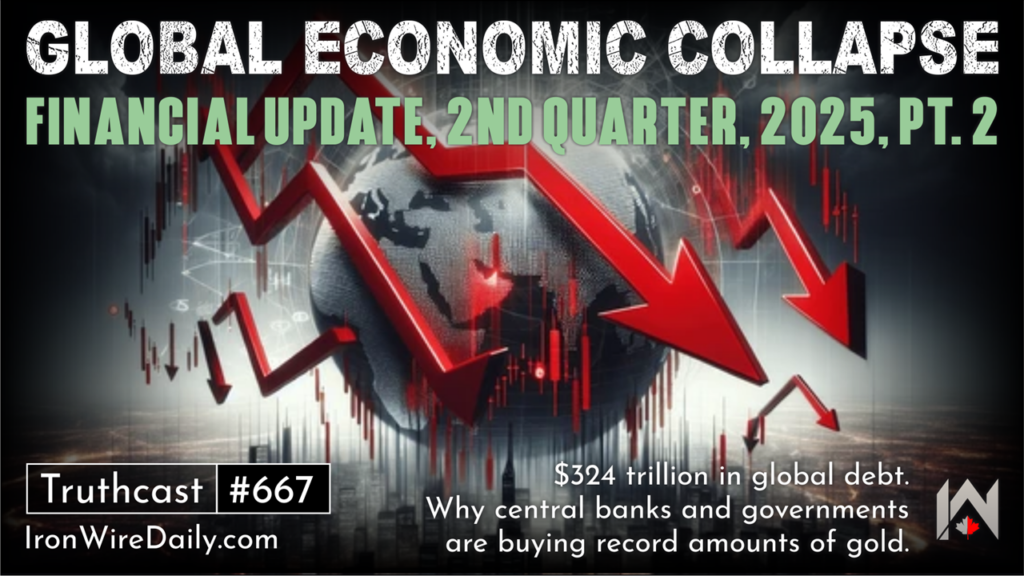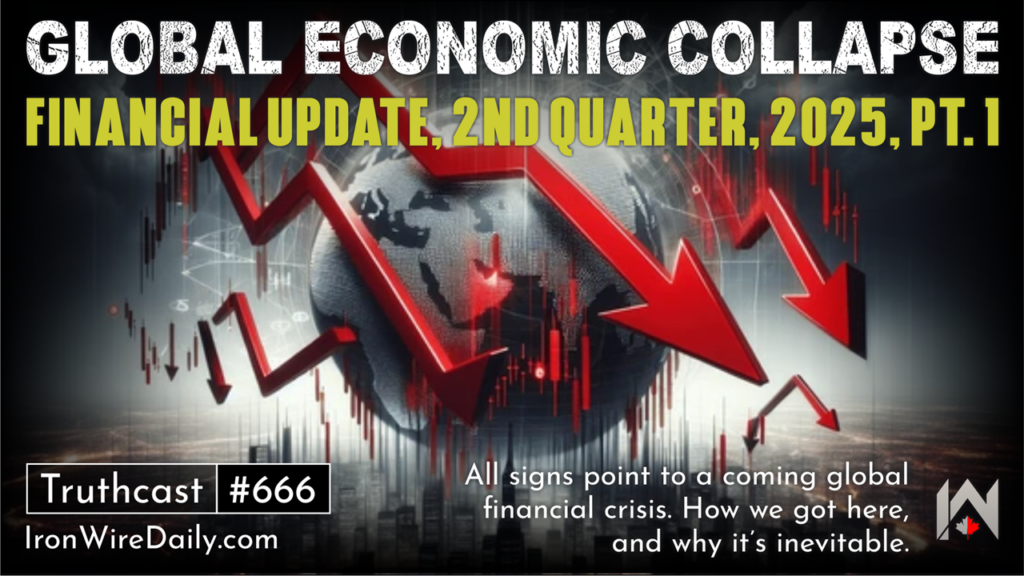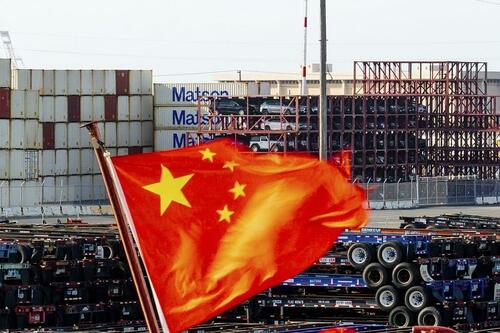How China Silently Won Global Control in Less Than a Decade

The past decade has seen headlines dominated by debates over Tiktok, trade wars, and internet censorship. But while governments in the West focused on short-term regulatory battles, China has used these ten years to quietly and successfully execute a longer play – to embed itself into the technical infrastructure of the world.
Spanning from telecoms to ports and semiconductors to smart cities, the sheer scope of China’s new influence has expanded significantly, through sustained investment and integration rather than dramatic confrontation. The shift has happened quietly. And it’s suddenly apparent that it’s too late to opt out.
#image_title
” data-image-caption=”
#image_title
” data-medium-file=”https://i0.wp.com/expose-news.com/wp-content/uploads/2025/07/China-Silently-Won-Global-Control-Less-Than-Decade-West-Never-Noticed.jpg?fit=300%2C169&ssl=1″ data-large-file=”https://i0.wp.com/expose-news.com/wp-content/uploads/2025/07/China-Silently-Won-Global-Control-Less-Than-Decade-West-Never-Noticed.jpg?fit=639%2C359&ssl=1″ src=”https://i0.wp.com/expose-news.com/wp-content/uploads/2025/07/China-Silently-Won-Global-Control-Less-Than-Decade-West-Never-Noticed.jpg?resize=639%2C359&ssl=1″ alt=”Illustration showing China’s influence over global infrastructure, with elements like container ships, cranes, surveillance cameras, semiconductors, skyscrapers, and digital servers symbolising China’s expanding control in technology, logistics, and cloud systems.” >
A Decade of Dominance
Undeniably, China is a powerhouse in 2025. But thinking back to the millennium, they were barely even on the global map. Much of its modern rise can be traced to the period following its entry into the World Trade Organization, which took place in 2001. From then on, the door opened to decades of export-led growth. The real turning point came in 2015, when Beijing launched the Made in China 2025 industrial policy, which would go on to irreversibly reshape the perception of the country – and everyone’s dependence on it.
Until a few years ago, China was best known for being the world’s factory for low-cost goods. The goal of the Made in China 2025 initiative was to move the country up the value chain and become leaders in high-tech manufacturing such as robotics, electric vehicles, biotech, semiconductors and aerospace. The initial investment to achieve this was first reported as $300 billion, but the pandemic-era stimulus alone added another $1.4 trillion in state-led financing for strategic sectors.
In short, the aim was not just to grow – it was to dominate.
Belt and Road Ideology
Running simultaneously was another key industrial push called the Belt and Road Initiative (BRI). Announced in 2013, and now described as a 21st-century Silk Road, BRI is a combination of physical infrastructure projects like roads, railways, and ports, with digital infrastructure exports known as the Digital Silk Road.
Through BRI, China has financed or built critical infrastructure – both digital and physical – across Asia, Africa, Latin America and parts of Europe. In return, Chinese companies have gained political leverage, contracts, and influence over future standards.
- 5G networks: Huawei leads deployment over all the global south, controlling a major share of worldwide coverage
- Smart cities: surveillance companies like Hikvision and ZTE have supplied key systems to over 80 countries, becoming embedded in day-to-day monitoring in all areas
- Cloud infrastructure: Alibaba Cloud has implemented governmental and banking systems in countries including Pakistan, Kenya and the Philippines
These technologies don’t just do a job – they have the power to shape economies and industries. And they’re not just quick wins either. Standards, maintenance and software updates all tie host countries to Chinese providers in the long-term, and they are so instrumental to the general functionality of a country that they are effectively irreplaceable.
The Forefront of AI and Semiconductors
With the boom in AI dependence, the new chokepoint of the world economy is the semiconductor industry. China, of course, has already positioned itself at the top of the food chain.
- Almost 60% of the world’s rare earths – essential for chip production, electric vehicles, and military systems – are now processed in China
- SMIC, China’s flagship chipmaker, is expanding to bring “at least” 3 new fabrication plants online by 2026
- Chinese firms filed more AI patents than any other country last year, with domestic models like Baidu’s ERNIE gaining ground on U.S. leaders
Western policymakers’ efforts (such as the U.S. CHIPS Act) aim to slow China’s attempts to become globally indispensable, but they cannot undo the key infrastructure that’s already in place. And, having implemented the necessary processes in the past decade, China-made components are now depended on by most of our countries for everything from smartphones to solar panels.
The Port Strategy
While now in an undeniably strong position digitally, China’s control of global infrastructure is not just technological. In the past 15 years, China has acquired ownership or long-term leases in over 100 commercial ports across the globe, including:
- Piraeus, Greece: one of Europe’s largest ports is majority-owned by COSCO, a Chinese state shipping firm
- Djibouti: home to both a Chinese-controlled port – which is strategically located at a pivotal point for maritime trade between Europe, Asia, and Africa – and its first overseas military base
- Hambantota, Sri Lanka: a key transportation hub especially for vehicles which was leased to China for 99 years after struggling to repay debts
Together, these ports – along with at least 112 others that China is known to have stakes in, spreading across every continent except Antarctica – form a global logistics web, offering influence over critical chokepoints and future leverage should economic or security situations require it.
A Silent Transformation
50 years ago, China’s largely agricultural market was isolated from the rest of the world. In 1975, its GDP was less than 2% of global output. Today, it’s the primary trading partner of over 120 countries and has grown into the world’s second largest economy. But the transformation has been more than just economic – it’s structural too. From a position of wanting to join the global system, China nowadays has the power to shape it.
However, the West appears to have been distracted by isolated issues on a short-term basis – such as TikTok legislation, social media disinformation – and failed to see it coming. Policy responses were often reactive rather than proactive, banning Huawei, blocking apps, or launching domestic subsidies.
In the meantime, entire cities, ministries, and supply chains have become reliant on Chinese systems, contracts, and hardware.
How This Changes the World
In cities across Africa and Asia, traffic flows are controlled by Chinese AI. Surveillance in public spaces run on Chinese firmware. Public health data is stored on Chinese servers. Even in the West, many consumer devices now rely on semiconductors and software libraries developed in China.
If these systems are ever disrupted by export bans, political issues, or geopolitical crises, entire sectors could lose functionality. Dependency, then, has become a form of dominance. No longer by invasion or forceful means, but by quiet integration.
What Happens Next?
It’ll be interesting to see how this pans out. Over the coming years, we could see:
- Emergence of competing tech blocks, with totally different standards and systems
- Continued reliance on Chinese infrastructure, especially in the global South
- Greater efforts to digitally decouple, though full separation appears almost impossible
China didn’t need loud confrontation, bold public statements, or an army to win. It managed it through strategy and design. While providing key systems and improving infrastructure for developing countries, China appears to have quietly out-engineered the rest of the world and made itself indispensable without anyone noticing.
Join the Conversation
What next? Do you think this will lead to political issues in the future? Or maybe you think it’s a net benefit that a country as fast-developing as China is sharing its systems with the rest of the world? Add your thoughts below.
The Expose Urgently Needs Your Help…
Can you please help to keep the lights on with The Expose’s honest, reliable, powerful and truthful journalism?
Your Government & Big Tech organisations
try to silence & shut down The Expose.
So we need your help to ensure
we can continue to bring you the
facts the mainstream refuses to.
The government does not fund us
to publish lies and propaganda on their
behalf like the Mainstream Media.
Instead, we rely solely on your support. So
please support us in our efforts to bring
you honest, reliable, investigative journalism
today. It’s secure, quick and easy.
Please choose your preferred method below to show your support.
















